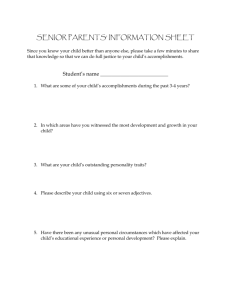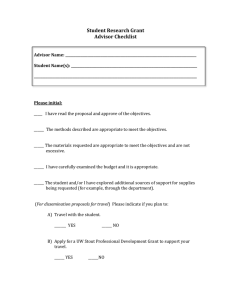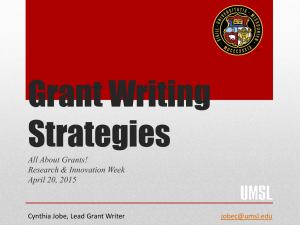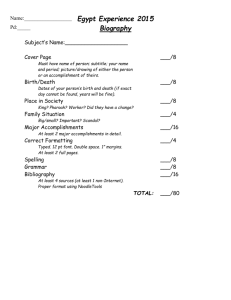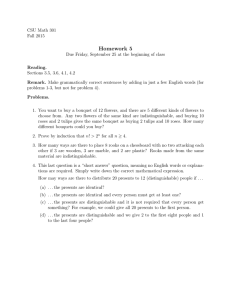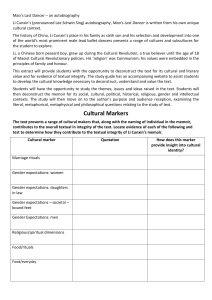Proposal Checklist
advertisement
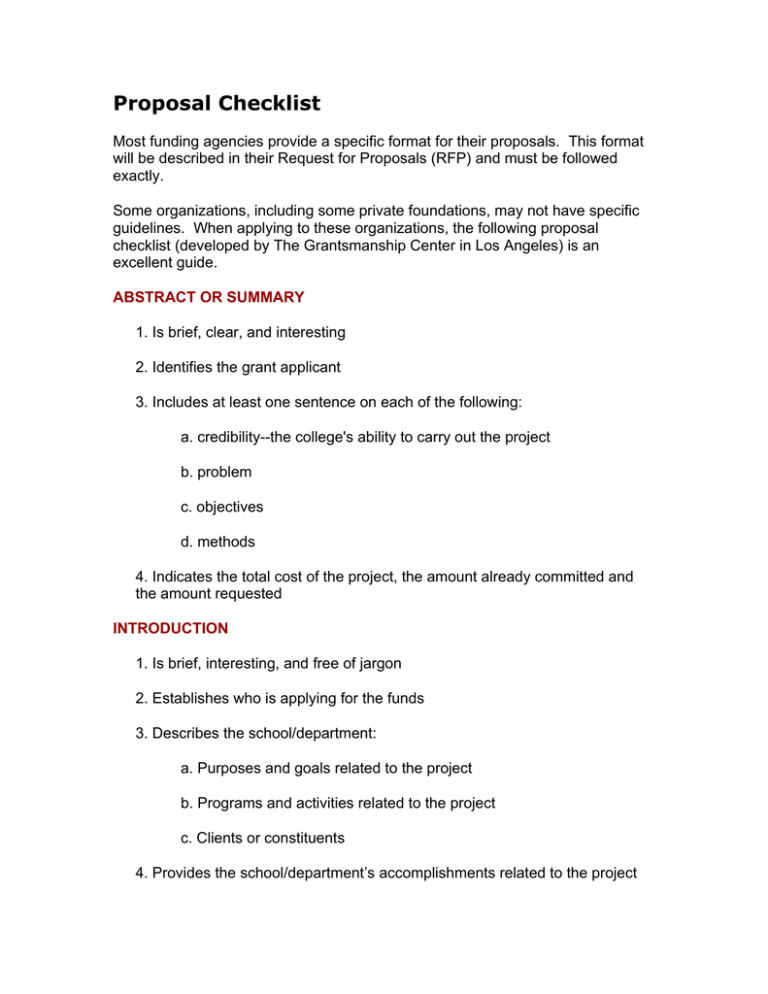
Proposal Checklist Most funding agencies provide a specific format for their proposals. This format will be described in their Request for Proposals (RFP) and must be followed exactly. Some organizations, including some private foundations, may not have specific guidelines. When applying to these organizations, the following proposal checklist (developed by The Grantsmanship Center in Los Angeles) is an excellent guide. ABSTRACT OR SUMMARY 1. Is brief, clear, and interesting 2. Identifies the grant applicant 3. Includes at least one sentence on each of the following: a. credibility--the college's ability to carry out the project b. problem c. objectives d. methods 4. Indicates the total cost of the project, the amount already committed and the amount requested INTRODUCTION 1. Is brief, interesting, and free of jargon 2. Establishes who is applying for the funds 3. Describes the school/department: a. Purposes and goals related to the project b. Programs and activities related to the project c. Clients or constituents 4. Provides the school/department’s accomplishments related to the project 5. Offers quotes/endorsements in support of the college’s accomplishments 6. Offers statistics in support of the school/department’s accomplishments 7. Offers qualifications in the area of activity for which funds are being sought 8. Leads logically to the problem statement PROBLEM/NEED STATEMENT 1. Is brief, interesting to read, free of jargon, and makes a compelling case 2. Relates to the mission and goals of the school/department 3. Is reasonable, i.e., it does not try to solve too much 4. Is supported by statistical evidence (or a review of literature showing a gap in knowledge for a research proposal) 5. Is supported by statements from authorities 6. Is stated in terms of the participants' needs 7. Makes no unsupported claims or assumptions OBJECTIVES 1. Includes at least one objective for each problem or need 2. Describes population that will benefit 3. Defines objectives as measurable outcomes, not methods 4. States the time by which objectives will be accomplished METHODS 1. Flows naturally from problems and objectives 2. Describes project activities 3. States reasons for selecting activities 4. Describes sequence of activities 5. Describes staffing of project 6. Describes participants and how they will be selected 7. Presents a reasonable scope of activities that can be conducted within the time and resources of the project EVALUATION 1. Presents a plan for evaluating accomplishment of objectives 2. Presents a plan for modifying methods based upon evaluation 3. Indicates who will conduct evaluation and how they were selected 4. States criteria for success 5. Describes how data will be gathered 6. Explains any test instruments or questionnaires to be used 7. Describes the process of data analysis 8. Describes evaluation reports to be produced FUTURE FUNDING OR INSTITUTIONALIZATION 1. Presents plan for obtaining future funding, if applicable, to continue project 2. Includes letters of support or commitment, if necessary BUDGET 1. Tells the same story as the proposal narrative 2. Is detailed in all aspects 3. Is sufficient to perform all project activities 4. Contains only items explained in the proposal narrative 5. Includes all items requested from funding source 6. Includes all items paid by other sources 7. Includes matching funds (cash, in-kind), if necessary 8. Details fringe benefits, separate from salaries 9. Includes all consultants 10. Details all non-personnel costs 11. Includes indirect costs and rate, if applicable
